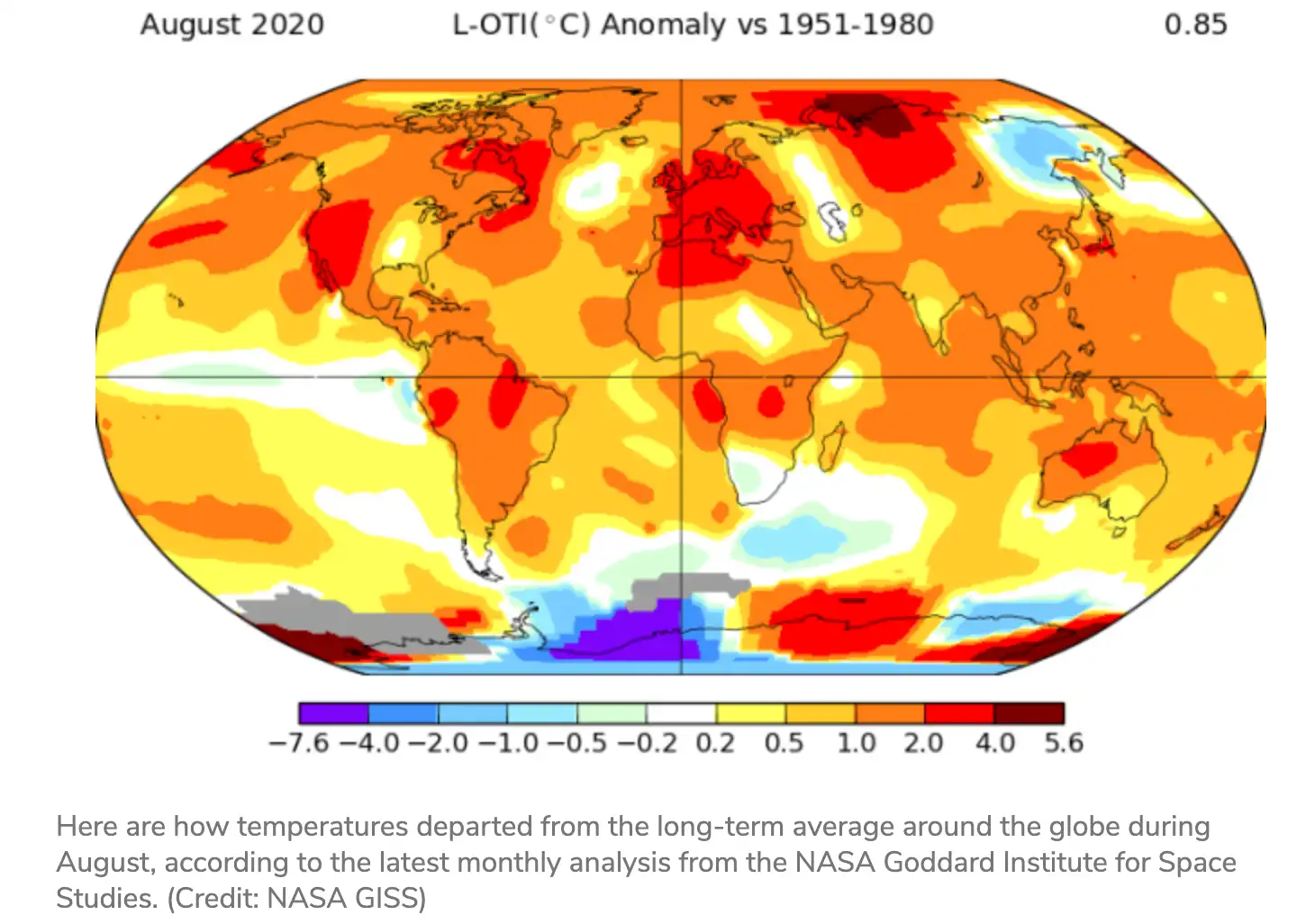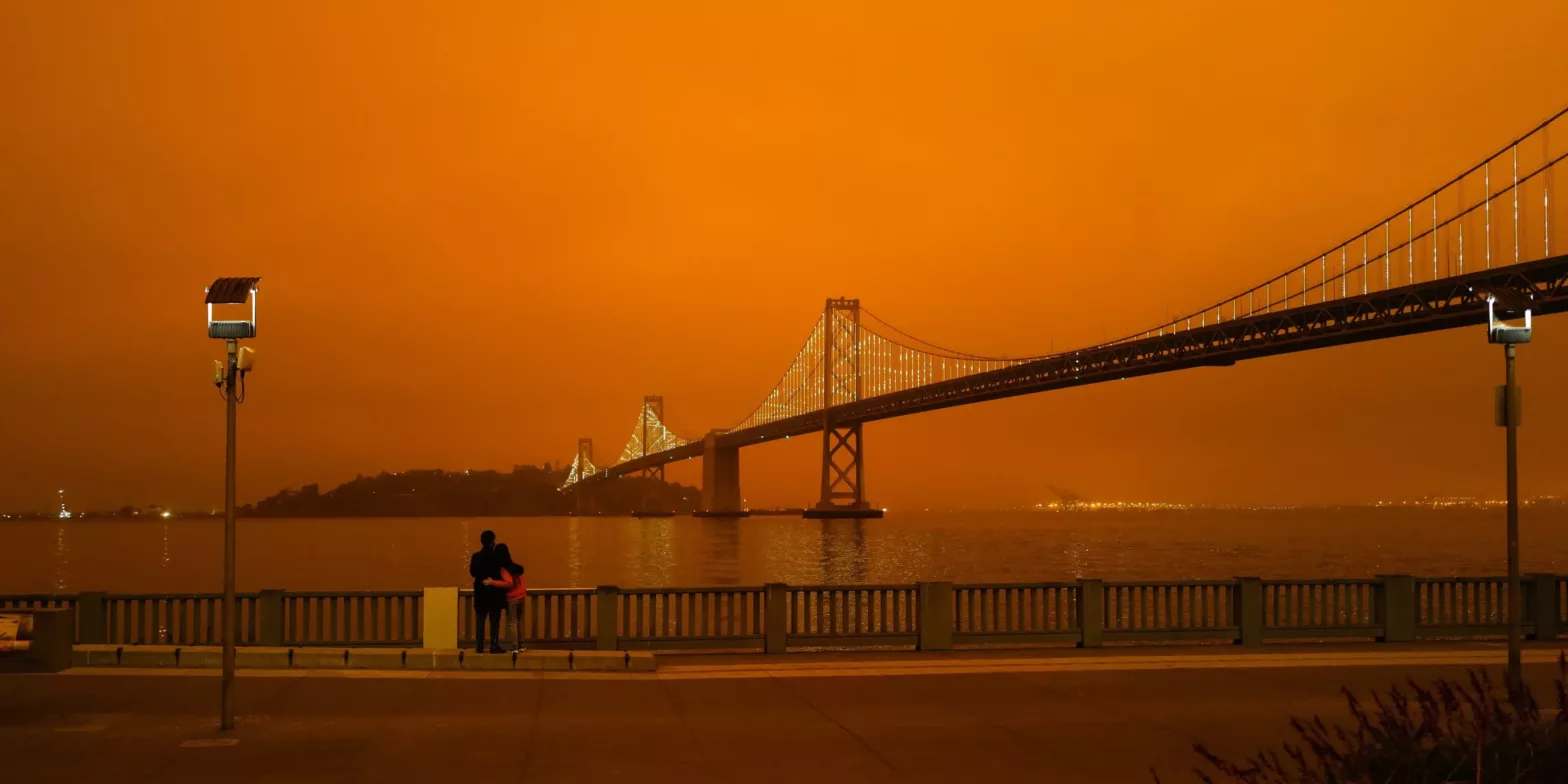The recent HBO miniseries Chernobyl captured a key moment in which human protagonists are confronted by the scale of a disaster. During this unprecedented man-made incident in 1986, nuclear scientists at a damaged nuclear reactor struggled to assess the danger from radiation, especially because the geiger counters on hand — devices meant to measure levels of radiation — didn’t go high enough to measure the amount of radiation leaking into the environment. The radiation essentially exceeded what the scientists had tools on hand to measure.
This week, the fires across the West Coast highlighted our own inability to comprehend the scale of a disaster scenario, with air quality in parts of Oregon exceeding the Environmental Protection Agency’s 500-point AQI scale. Previously, events that put the AQI at 300 were “extremely rare”; in recent days, the AQI in places like Eugene, Oregon topped 700, essentially unfamiliar territory in terms of air quality.
Though not quite the same as a nuclear meltdown, we are similarly unprepared to answer key questions about the crisis: What are the health impacts of exposure to this air? What are the long-term effects of fires in forest land that shouldn’t typically burn? And above all, to what degree is human activity, via climate change or other mechanisms, responsible for such natural disasters?
This week, The Factual surveyed 29 articles from 23 news sources across the political spectrum to see how the media is talking about the West Coast’s mega-fire season, including views on how and to what degree human activity is responsible for seemingly apocalyptic scenarios.
Please check your email for instructions to ensure that the newsletter arrives in your inbox tomorrow.
A Wild Wildfire Season
Given the unprecedented scope of this year’s wildfires on the West Coast, a common question is why this wildfire season has been quite so bad. A cursory glance at headlines and comments by national figures would lead one to believe that there is a simple dichotomy, with the political left blaming climate change and the right blaming bad government policies. In reality, there seems to be some broad agreement on the key factors at play: (1) a problematic approach to forest management that has led to greater fire risks, (2) human behavior that makes fires more dangerous and more likely, and (3) a warming climate. Only when measuring to what degree changing climate is responsible, and the fundamental reasons for why climate is changing, does real disagreement emerge.
A big misconception about fires is that they are inherently dangerous and/or bad for the environment, but the reality is that they are an essential part of ecosystem renewal and healthy environmental progression. In a natural scenario, many forest habitats should burn on a regular basis, clearing the underbrush while leaving larger trees mostly unharmed. But a longtime misdirected approach to fire management on the West Coast has prioritized putting out fires quickly to protect growing human populations. However, this strategy has not been accompanied by enough controlled burns to limit growing fire risks and maintain normal ecosystem renewal.
“Part of the difficulty is that California’s climate provides only limited periods of time when crews can safely light fires to manage forest health. The conditions must be dry enough for vegetation to burn, but not dry enough to risk a runaway blaze.” – San Francisco Chronicle
While the safety rationale of the choice not to burn seems straightforward, it can perversely have the opposite effect. If an ecosystem does not burn, the underbrush continues to build up, making the next eventual fire hotter and more dangerous. As the fire intensity increases, trees that shouldn’t burn go up in flames and smaller, low-intensity fires become fast-moving disasters that endanger natural ecosystems and human settlements alike. In this way, man-made policies have helped make the West Coast a tinderbox.
Further aggravating this risk is human behavior. As populations and urban areas grow, humans have expanded ever-outward, encroaching on and living in heavily-forested areas. This has increasingly placed populations in danger from wildfires. Forest management has been consistently under-resourced, and landowners aren’t always willing to respond with the measures needed to mitigate fire risks. In California, for example, the state only owns 57% of forested land and cannot obligate private landowners to use controlled burns to mitigate fire risks.

The WUI, or wildland-urban interface, is the area where human settlement and wildlands intermix. These are areas were human structures are in close proximity to land prone to wildfires. Source: USDA
Factors such as lower housing costs and a desire to be closer to nature have helped encourage the development subdivisions and individual homes well into the forest. To make matters worse, as these populations (and people from across the states) spend more time outdoors and in these forests, the risk of fire goes up. The ever-increasing levels of human activity is accompanied by an ever-higher risk of fire.
Finally, the overall climatic conditions cannot be ignored. 2020 promises to be one of the hottest years on record, and this year’s fire season vigorously kicked off on a record-hot Labor Day weekend, partly because of a freak lightning storm in California (with over 12,000 lightning strikes) and partly because landscapes across the West Coast were uncharacteristically dry — even for fire season.

This map shows how average temperatures in August 2020 contrast with the average August temperatures from 1951-1980. Source: Discover Magazine
It would seem that disputes about whether the world is warming have been replaced with a general agreement that, yes, things are getting hotter. This has obvious, straightforward effects for natural events like wildfires. Higher temperatures mean drier vegetation and potentially even more high-intensity wind events. That this is at least part of the reason for this fire season’s severity is clear to people on both sides of the spectrum.
Where these perspectives diverge is in terms of just who or what is responsible for changing climate. Though President Trump has used the occasion to cast doubt on the question of whether climate is changing — something almost all of the articles reviewed for this analysis roundly agree to be the case — the more pertinent divergence regards the degree to which human activity is responsible for the changing climate.
Articles from the political left and center are clear in the science and rationale for linking human activity, particularly the release of greenhouse gas emissions, with climate change — a phenomenon that represents a combination of not just overall warmer temperatures but also increasing weather extremes, rising sea levels, and shifting climatic patterns. In the case of wildfires, this means some articles lay proportionally more blame on larger climate trends, blaming global CO2 emissions as much as localized factors like forestry management.
“Many of the phenomena happening now have been predicted for years by agencies like NASA, NOAA and the United Nations, as well as researchers and scientists around the world, who say the only chance of slowing climate change is cutting back or eliminating the biggest producers of greenhouse gases, including cars.” – The Weather Channel
Many on the political right are still hesitant to conclude that human activity is the driving force behind a changing climate, even if many acknowledge that the climate is getting warmer. As a result, much more right-leaning coverage focuses on the direct, human reasons for the current spate of fire disasters, and roughly half of Republicans may think that climate change has not played a role in the current fires.
Ideally, we could better isolate each variable to say how much human movement into forests is responsible for fires and how much is due to a warmer climate, but this is hard to parse from overall trends. For example, across the U.S. we built as many as 32 million homes between 1990 and 2015 in the wildland-urban interface — areas where the wildlands intermix with human development — many of which are at increased fire risk. At the same time, fires near Portland are burning forest that has historically been too wet to pose a significant hazard to long-standing neighborhoods.
“What’s different this time is that exceptionally dry conditions, combined with unusually strong and hot east winds, have caused wildfires to spiral out of control, threatening neighborhoods that didn’t seem vulnerable until now.” – New York Times
A positive perspective on the issue might note that both sides, despite clear and vocal differences, actually agree that human activity and behavior make up many of the key reasons for these apocalyptic conditions.
Please check your email for instructions to ensure that the newsletter arrives in your inbox tomorrow.
Moving Forward
As smoke wafts across the U.S., there may be greater impetus to drive higher-level reform to address these growing issues. There are many reforms that both sides can agree on. Above all, we need to modify land management practices and divert more resources to both fire response and prevention. For example, as the risk of fire has increased, funding that should be used for fire prevention has been shifted to firefighting. Cumbersome regulatory hurdles have slowed the implementation of controlled burns, and private landowners can still reject such preventative action, often fearful of liability. Measures like increasingly fire-proof homes can help, but only go so far.
“Forest Service spending on fire suppression in recent years has gone from 15 percent of the budget to 55 percent – or maybe even more – which means we have to keep borrowing from funds that are intended for forest management.” – Secretary of Agriculture Sonny Purdue
Below this common ground, larger disagreements promise to persist, especially about climate change and its role in the current conflagrations. A host of policy actions that the political left targets, such as reducing CO2 emissions and mandating energy-efficient devices, is seen by many on the right as both regulatory overreach and tangential at best to the real drivers of the issue at hand. Either way, it’s worth recognizing that everyone agrees that humans, one way or another, are responsible for the fires burning at our doorsteps.
Appendix
Below is a list of the articles used to inform this analysis. To learn more about how The Factual scored article credibility, visit out How It Works page.

